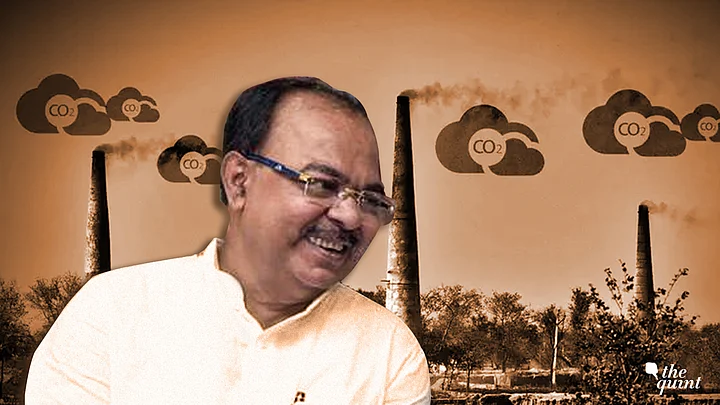The Mayor of Kolkata, Sovan Chatterjee, who also happens to be the state environment minister, called an unprecedented press conference on Friday, 19 January, on the issue of air pollution in Kolkata.
Chatterjee’s briefing began with an outright denial of recent reports which showed that Kolkata air is worse than Delhi, making it one of the world’s most polluted cities.
Every member of the press was given a comparative data chart of pollution levels in Delhi and Kolkata from the 1 to 15 January, and was told that, according to government data, pollution levels in Kolkata have been much lower than Delhi.
“A bad image is being painted of Kolkata”, the Mayor claimed, adding that “Kolkata is completely safe to breathe in”.
Interestingly, according to the data supplied by the state government, the Air Quality Index in Kolkata has been consistently above “hazardous” levels, and even worse than Delhi on four days. So, while the press conference was just an exercise to preserve Kolkata’s “clean” image, here are some questions that it should have answered instead.
1. What Is The Source Of the Government’s Pollution Data?
Any data pertaining to pollution levels in Kolkata since November 2017 has been sourced from the American Consulate monitoring station, which monitors just one kind of pollutant (PM 2.5), and that too for just one area. This is because the two real-time air quality monitors that the government has, have been defunct since the time. The American Consulate data is thus the only data available in the public domain for the last three months.
In his address, the Mayor said that American Consulate data cannot be treated as that for all of Kolkata, because of its limited purview. The government data, with much lower levels, was presented as contrarian data to show the situation isn’t that bad. However, when questioned on what the source of this data was, the Mayor said that it was collected from manual monitors, not real-time, automatic ones.
As The Quint had earlier reported, data from manual monitors is considered to be erroneous because they cannot monitor certain kind of pollutants, and has been rejected as a credible source by both the Central Pollution Control Board and the National Green Tribunal. Why then should this data be seen as a credible source? When questioned, the Mayor said that he “should be allowed some time”.
2. When Is Data Going To Be Made Available To The Public?
At levels of “hazardous” pollution, governments have the responsibility of informing those most vulnerable that the air around them may be unsafe. In cities like Delhi, pollution data is not only made available on the official website of the Pollution Control Board, but also displayed in public places so that the citizenry is made aware of the pollution levels and can take adequate precautions – like wearing masks while outside or not going for morning walks.
However, with no public data available, the residents of Kolkata are completely unaware of how toxic the air is.
When asked, the Mayor said that technology is changing and they had to update their existing machines in order to display real-time data. “There is no need for people to take precaution. Lies are being peddled that Kolkata air is bad”, he added.
3. Why Are The Changes In Technology Being Made Now? In Peak Pollution Season?
The Quint questioned the Mayor on why these “technical changes” were being made at a time when pollution levels are usually the highest.
Kolkata’s pollution problem is not new. It had been ranked as the fourth most polluted metropolitan by the World Health Organisation (WHO) in 2015. There were reports of Kolkata’s pollution levels being higher than Delhi’s in 2017 as well. So why start any work on pollution in November – right before pollution levels hit a high?
In response to our question, he said, “we must appreciate that a change in technology is taking place”.
4. What About A Law On Diesel Emissions?
The one point that was barely touched upon by the Mayor, in spite of questions by the journalists, was whether the government planned to introduce a law on diesel emissions. According to a report by the Centre For Science And Environment, diesel emission has been the worst source of particulate matter pollution in the city, with registration for diesel vehicles increasing by over 150 percent a year.
Only 10 percent of public transport (in a city that is heavily reliant on public transport) is owned by the state. All other forms of transport are private, without any emission regulations.
Will the state take measures to bring more vehicles under its ambit? Will there be regular emission checks? “Diesel pollution can only be curbed when there’s a nationwide shift to cleaner fuel,” was the answer.
Dear Mr Mayor, why turn the battle for breathable air into a fight to save Kolkata’s tarnished image?
